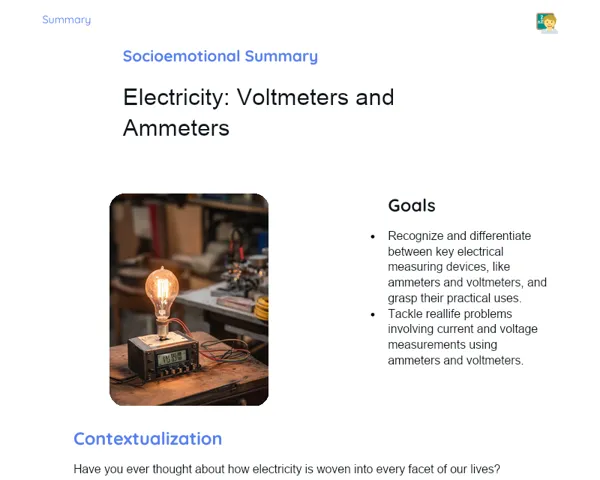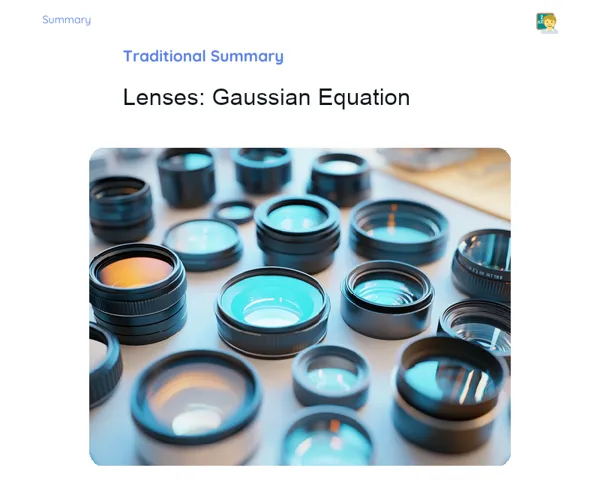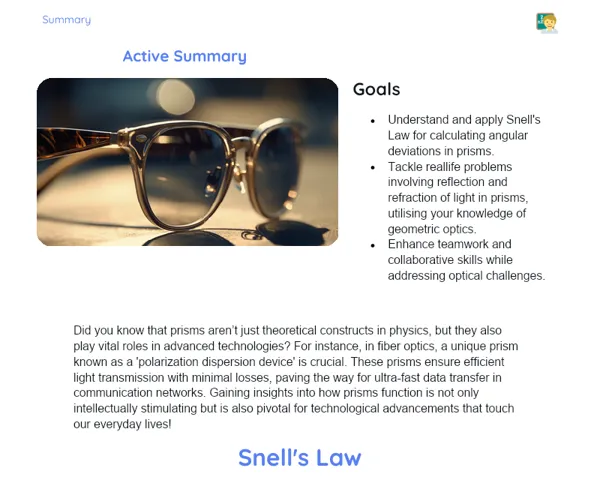Summary Tradisional | Modern Physics: Hydrogen Atom
Contextualization
Comprehending the hydrogen atom is crucial for grasping the essence of modern physics. The atomic model introduced by Niels Bohr in 1913 revolutionized our understanding by quantizing the energy levels of electrons, addressing issues that earlier models, like those of Dalton and Rutherford, couldn't solve. Prior to Bohr, Rutherford's concept suggested that electrons orbited the nucleus like planets around the sun; however, it couldn't explain why electrons wouldn’t radiate away energy and spiral into the nucleus. Bohr proposed that electrons occupy specific orbits, and energy is emitted or absorbed only when they transition from one orbit to another. This idea of quantization was a pivotal moment in science as it clarified atomic stability and aligned with the emission spectra observed experimentally.
The significance of Bohr's model goes beyond theoretical discussions. Its principles manifest in contemporary technologies, particularly in spectrometry, which is vital for analyzing chemical compounds across various domains, including medicine and astronomy. For instance, spectrometry enables scientists to ascertain the chemical makeup of distant stars and planets, aiding in our understanding of the universe's formation and evolution. This practical aspect underscores that the theoretical knowledge of the hydrogen atom extends beyond academia; it's foundational for numerous technologies we rely on today.
To Remember!
Bohr's Atomic Model
Niels Bohr introduced his atomic model in 1913, which transformed our understanding of atomic structure. He asserted that electrons orbit the nucleus at quantized energy levels, meaning they can occupy specific orbits without continuously radiating energy. This model rectified the flaws of prior models that failed to explain atomic stability.
Bohr grounded his model in two key postulates: Firstly, electrons can only exist in certain permitted orbits with a fixed energy; secondly, radiation is emitted or absorbed only when an electron shifts from one orbit to another, leading to the quantization of energy. These principles elucidated the hydrogen emission spectrum, which features distinct lines instead of a continuous spectrum.
Beyond explaining atomic stability, Bohr's model played a significant role in the evolution of quantum mechanics. Though it has limitations and was refined by advanced quantum theories later, it established the groundwork for understanding quantized energy states and the dual nature of particles and waves.
-
Introduced by Niels Bohr in 1913.
-
Key postulates: quantized energy levels and transitions between orbits.
-
Clarified the hydrogen emission spectrum.
Hydrogen Atom Equation
The equation corresponding to the hydrogen atom integrates classical physics and quantum theory to delineate the atom's structure and functioning. The basic equation for the radius of the n-th orbit can be expressed as r_n = n^2 * h^2 / (4 * π^2 * m_e * e^2), where n represents the principal quantum number, h is Planck's constant, m_e denotes the mass of the electron, and e signifies the charge of the electron.
This formula indicates that the orbit's radius is directly proportional to the square of the principal quantum number, n. Hence, as n escalates, the radius of the orbit also increases, placing it farther from the nucleus. Additionally, the quantization of energy levels implies that electrons can only inhabit specific orbits, a fundamental aspect of atomic stability.
The equation of the hydrogen atom stands as an exemplary case of how quantum theory was leveraged to resolve issues that classical physics failed to explain, such as atomic stability and emission spectra. These calculations are vital for comprehending atomic structure and contribute to the development of technologies grounded in quantum principles.
-
Fundamental equation:
r_n = n^2 * h^2 / (4 * π^2 * m_e * e^2). -
The orbit's radius correlates with the square of the principal quantum number.
-
Crucial for understanding atomic stability and emission spectra.
Calculation of the n-th Orbit Radius
Calculating the radius of the n-th orbit of the hydrogen atom follows from the formula derived from Bohr's model. For instance, to find the radius of the first orbit (n=1), we replace n=1 in the formula r_n = n^2 * h^2 / (4 * π^2 * m_e * e^2). Using the constants h = 6.626 x 10^-34 J.s, m_e = 9.109 x 10^-31 kg, and e = 1.602 x 10^-19 C, we derive the radius.
For the first orbit, the calculation yields approximately 5.29 x 10^-11 m, commonly referred to as the Bohr radius. For the second orbit (n=2), the radius is roughly 4 times larger, and for the third orbit (n=3), it's 9 times greater than the first, and so forth.
These calculations showcase energy level quantization and the spatial arrangement of electrons around the nucleus. They are fundamental for grasping atomic structure and serve as the basis for numerous experiments and applications in modern physics and chemistry.
-
Formula:
r_n = n^2 * h^2 / (4 * π^2 * m_e * e^2). -
Radius of the first orbit (n=1) is about
5.29 x 10^-11 m. -
Illustrates the quantization of energy levels and electron distribution.
Energy Level Transitions
Energy level transitions in Bohr's model transpire when an electron shifts from one quantized orbit to another. This movement is linked with the emission or absorption of a photon, whose energy equals the difference in energy between the two levels. The energy of the photon is described by E = h * ν, with h as Planck's constant and ν representing the frequency of the photon.
For instance, when an electron in the hydrogen atom moves from the second orbit (n=2) to the first orbit (n=1), it emits a photon with an energy of 10.2 eV. This value is determined via the formula E_n = -13.6 eV / n^2, describing the energy of each level.
These transitions elucidate the observed emission and absorption spectra. The spectral lines correspond to specific transitions between energy levels, facilitating the identification of elements present in a sample. This idea is extensively applied in spectrometry and various analytical techniques.
-
Transitions occur between quantized orbits with photon emission or absorption.
-
Energy formula for levels:
E_n = -13.6 eV / n^2. -
Clarifies the observed emission and absorption spectra.
Key Terms
-
Bohr's Atomic Model: A model that quantizes the energy levels of electrons.
-
Orbit Radius: The distance of the electron from the nucleus within a specific orbit.
-
Energy Level Transition: Movement of electrons between orbits involving emission or absorption of energy.
-
Spectrometry: An analytical technique to determine the composition of substances based on emission or absorption spectra.
-
Principal Quantum Number: An integer that dictates the energy level and the radius of the electron's orbit.
Important Conclusions
In this lesson, we delved into Bohr's atomic model and its significance in modern physics. Bohr's model transformed our understanding of atomic structure by presenting the quantization of electron energy levels, which clarified atomic stability and the emission spectra that earlier models were unable to account for. We discussed fundamental equations that describe the hydrogen atom, emphasizing the calculation of orbit radii and the energy related to transitions between energy levels.
We recognized that the quantization of energy levels is paramount for atomic stability and for elucidating experimentally observed emission and absorption spectra. This theory is vital not just for theoretical physics but also for diverse practical applications, such as spectrometry utilized in chemical analysis, medical diagnostics, and astronomical research.
Grasping and applying Bohr's principles is essential for propelling advancements in science and technology. We encourage students to delve deeper into this topic, exploring the limitations of Bohr's model and its progression in contemporary quantum mechanics, along with its practical implications across various fields.
Study Tips
-
Review the fundamental equations and ensure clarity on each term involved. Practice calculating orbit radii and energy transitions for various values of n.
-
Examine the transition from earlier atomic models to Bohr's model and how each contributed to the development of atomic theory.
-
Investigate the practical applications of Bohr's model, particularly in spectrometry, to comprehend how theory ties in with practice across different scientific areas.



